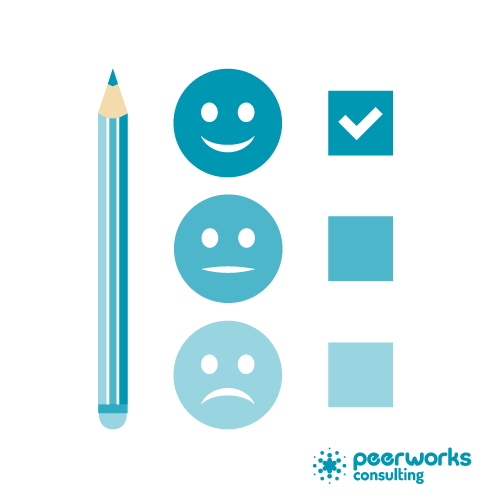
This time of year charities find themselves quite busy executing their peer-to-peer fundraising programmes … especially their fundraising events.
So while you’re working hard to make sure your events go off without a hitch, you should also be making sure your post-event surveys are ready to roll.
Before we dive into our top tips, we’d like you to consider the types of things you can learn from your post event surveys. (Note: These also apply to your virtual events and “do-it-yourself” programmes.)
First, surveys are a great way to collect participant data that you may not have been able to collect on your event’s sign-up form. This data could include things like the number of years someone has participated and/or fundraised, whether or not someone was on a team (or a team captain) and other demographic information like age, gender and address.
Surveys are also a great way to capture experiential feedback. You can find out how participants felt about the different aspects of your event experience–from the time they register until the time they are heading home from event day.
Finally, surveys can help you gain a deeper understanding of someone’s motivation for participating in your event such as why they chose to sign up, why they started or joined a team and why they chose to fundraise (or raise a lot!).
When it comes time to analyse your survey responses, you’ll be able to cross-reference the motivational and experiential feedback with the demographic data you collected. Doing that will give you specific insights on how the different segments of your participant base felt about the event experience.
And now, here are our top five tips for making the most of your post-event surveys.
1. Determine key themes
Before you start writing questions, first ask yourself “What do I want to learn?” This will help you stay on topic and ask questions that will lead directly to the insights you’re looking for.
2. Ask questions people can answer
A great way to achieve this is by using scaled/rated answers and by avoiding the use of open-ended and “double barrel” questions–which is a single question that touches on multiple issues making it difficult to answer. Remember, the way you ask the question often determines the kind of feedback you will get.
3. Stay neutral
Avoid using leading and biased questions. You are asking respondents for their point of view to learn from them, so make them feel comfortable expressing their experience. Bonus tip: Ask a colleague from another department (not responsible for your events) to double-check the neutrality of your questions.
4. Be thorough
You would be surprised how many questions your supporters are willing to answer…as long as the questions are easy to answer! Believe it or not, we’ve seen high response rates from surveys with 60+ questions! As a general rule, your survey should take less than ten minutes to complete…and be sure to let people know how much time they can expect to spend while doing it. Setting expectations is everything.
5. Send it right after the event
Supporters will be more likely to complete the survey because it will be easier for them to remember the event experience. Do not hesitate to send a reminder email, reinforcing the importance of the survey and its goals. Bonus tip: We usually send two reminders…one week before and one day before the deadline.
We hope these tips prove helpful when writing your next survey! If you’d like a second-opinion on your survey before you send it…or if you would like some other advice on how to properly assess your event programme…you know where to find us!
P.S. Are you attending Institute of Fundraising Convention next month? We will be presenting a session on analytics and sharing the insights we gained while assessing and optimising Darkness Into Light–the world’s largest single-day fundraising event!
